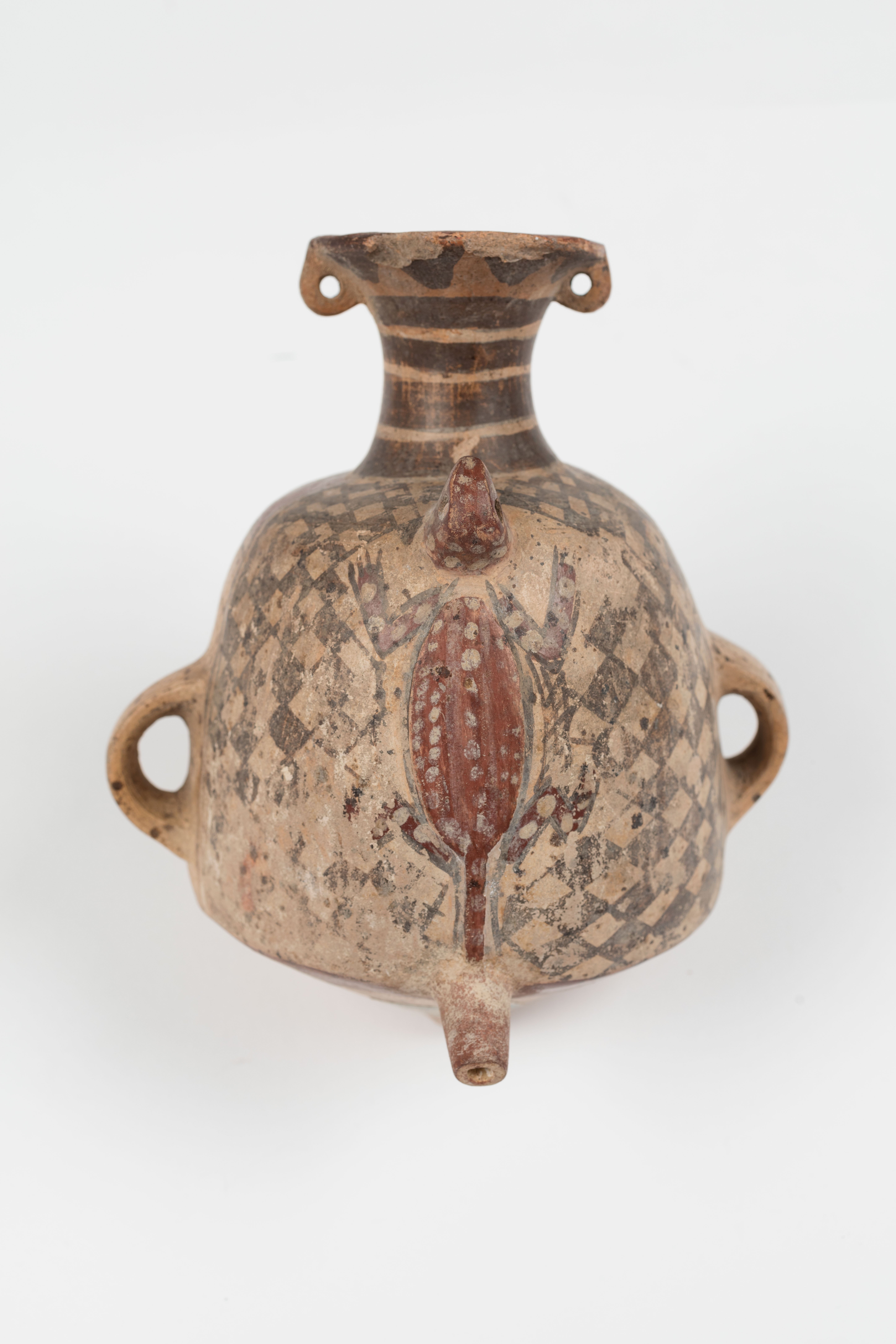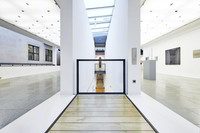A clay jar from Ancient Peru, Inca style, probably from the Late Horizon. The jar resembles the form of an amphora. It has a roundish belly with a tapered bottom. The neck ends in a broad-rimmed mouth that is provided with an eyelet on both sides. Two handles are attached sideways in the lower area of the belly. The clay of the vessel has a light yellow undertone and is decorated with slip and red and black ornamental painting. The neck has black stripes and the belly has a rhombic pattern on the front. Ahead in the middle, there is a relief of a lizard that is partly painted and partly sculptural shaped - the head of the lizard protrudes from the belly and the painted tail merges into a short, conic spout tube which is located between the jar's belly and the bottom. The back is not painted resp. the paintings on the front and between neck and belly are terminated through a line, and thus edge the unpainted area on the back.
Such amphora-like jars are denoted as "aryballos" resp. "aribalo" referring to a resembling form of jars of the ancient Greece. This form is typically for the Inca culture. These vessels vary in size and serve for storing and transporting liquids. The vessel was carried on the back by pulling a cord through the handles of the eyelets and tying them together across the chest or forehead.
The Museum of the City of Ulm bought the jar together with four other Peruvian vessels from art dealer Dr. Franz Xaver Weizinger.
de

